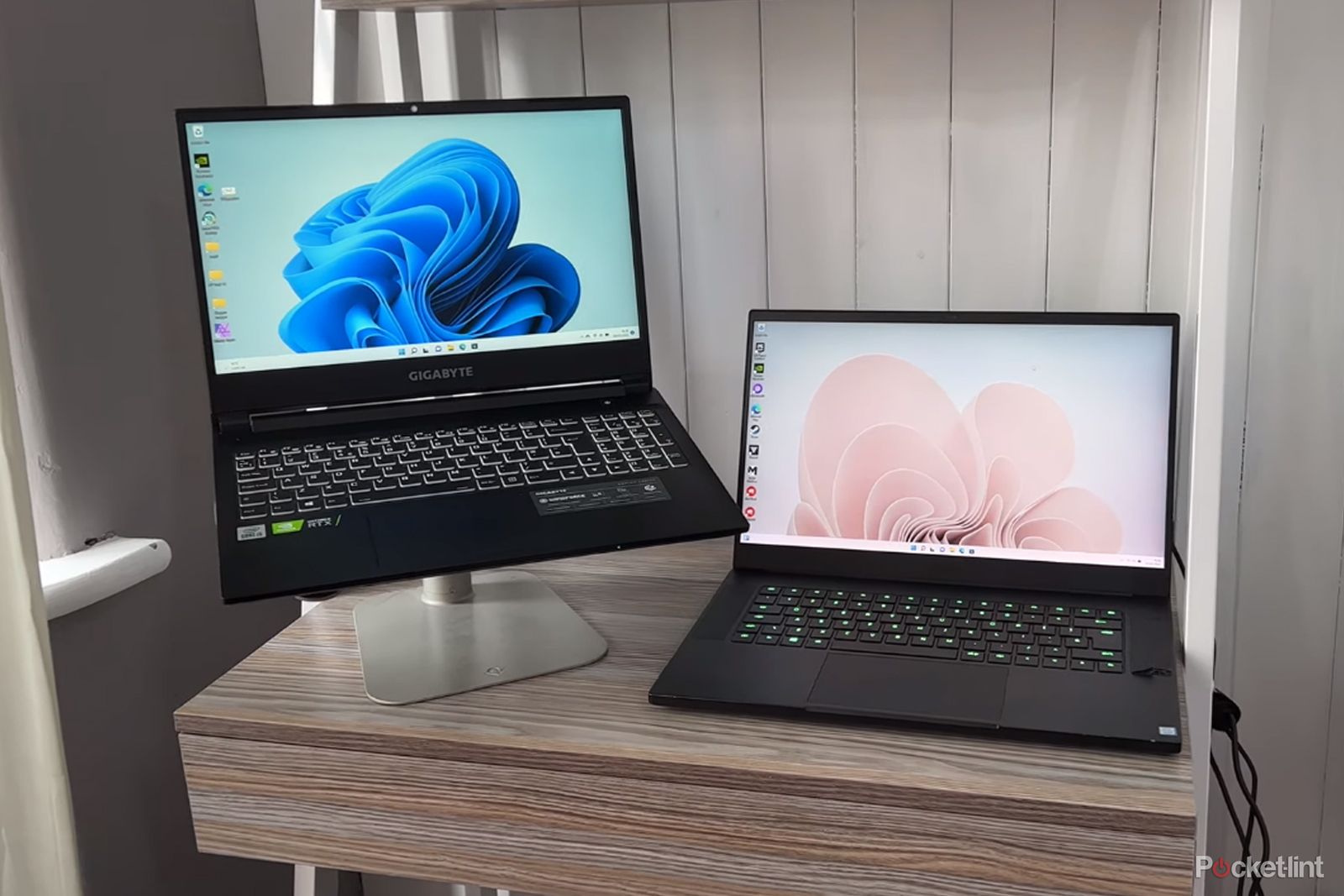It's safe to say that over the past few years we've seen a huge number of advancements when it comes to the tech that goes inside your laptops. You can now get a powerful, portable laptop from a host of manufacturers, and it doesn't have to cost the earth either.
If you haven’t noticed, there's been a major update in graphics performance, especially from Nvidia's most recent GeForce RTX 30-series GPUS.
So if you're still rocking a laptop with the GTX 10-series model, there's a very good chance you'll experience a big boost and you don't have to spend a fortune to get that performance upgrade.
If, for instance, you go with an RTX 3060 laptop like this Gigabyte G5, you can spend as little as £799 and benefit from the latest technology. So exactly what has been improved since the 10-series (like this older Razer Blade)? In short - a lot.
What's better with an RTX 30-series card?
Nvidia has a bunch of technologies that go with a graphics card. All of them combine to create an all-around speedy experience.
There's Dynamic Boost, Nvidia's tech that automatically switches power from the CPU to the GPU when it's needed, to ensure you get the highest performance, but without having to do anything.
There's also something called DLSS, which is short for Deep Learning Super Sampling, and is an AI technology used to boost graphics performance and frame rates using the Tensor Core AI processors built directly into the GPU itself. That means super smooth gameplay thanks to speedy frame rates without sacrificing image quality, perfect for taking advantage of fast refresh displays like the 144hz panel on that Gigabyte laptop.
RTX 30-series laptop GPUs also come equipped with ray-tracing capabilities too, so that games with ray-tracing support show with much more realistic lighting effects. It's a visual lighting technique that more accurately renders light in a scene and requires less creation time from the artist than old methods.
And there are plenty of games that take advantage of these Nvidia technologies. These include the likes of Guardians of the Galaxy, Apex Legends, Cyberpunk 2077, Dying Light 2, Metro Exodus, Shadow of the Tomb Raider and even Minecraft, among many, many more.
So where you might have found a 10-series laptop struggling to maintain those high frame rates, or beautifully ray-traced scenes, the RTX 30-series uses its advanced intelligence to keep up with the most demanding games more effortlessly.
In short, you can get incredible performance, on a system that you can carry around in your backpack.
It's not just about gaming brute force though. The latest 30-series laptops also have other smart capabilities that make them ideal for work and general everyday use, whether you're a creative or just someone who needs a portable machine for getting work done.
Nvidia has also worked with CPU vendors to develop a new, low-level framework called CPU Optimizer that enables the Nvidia GPU driver to further optimize performance, temperatures, and power consumption. Efficiency is achieved by reducing unnecessary overhead calculations and power is shifted from between the GPU and CPU whenever it is needed most.
Rapid Core Scaling is another new Nvidia tech that will benefit creative applications like Adobe Premiere Pro, Blender, or MATLAB. Rapid Core Scaling automatically senses workload characteristics and rapidly shifts power among GPU cores while on battery power. By intelligently shifting power based on the workload, higher clock rates and higher performance can be achieved.
These optimisations working also ensure your battery won't drain as quickly as it would with an all-guns-blazing approach, and also mean you won't have the fans spinning like helicopter blades.
So there you have it, some pretty compelling reasons why you should consider ditching your old 10-series laptop for a new GeForce RTX 30-series machine like the Gigabyte G5. And like we mentioned, you can grab it for as little as £799 in the UK.
These are just a handful of the benefits you get for switching to an Nvidia GeForce RTX 30-series laptop - you can find out even more on Nvidia's website here.

